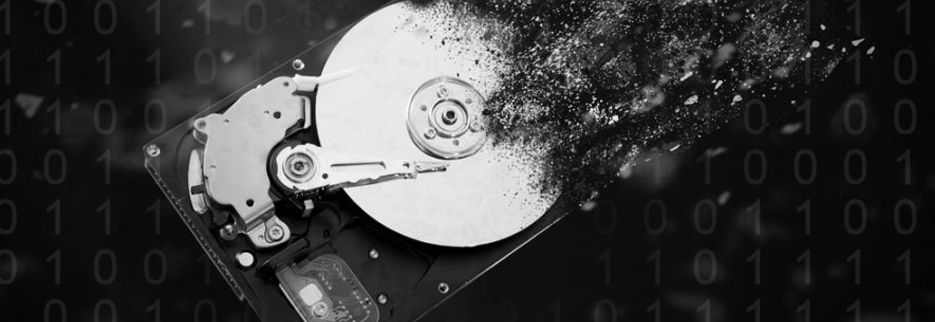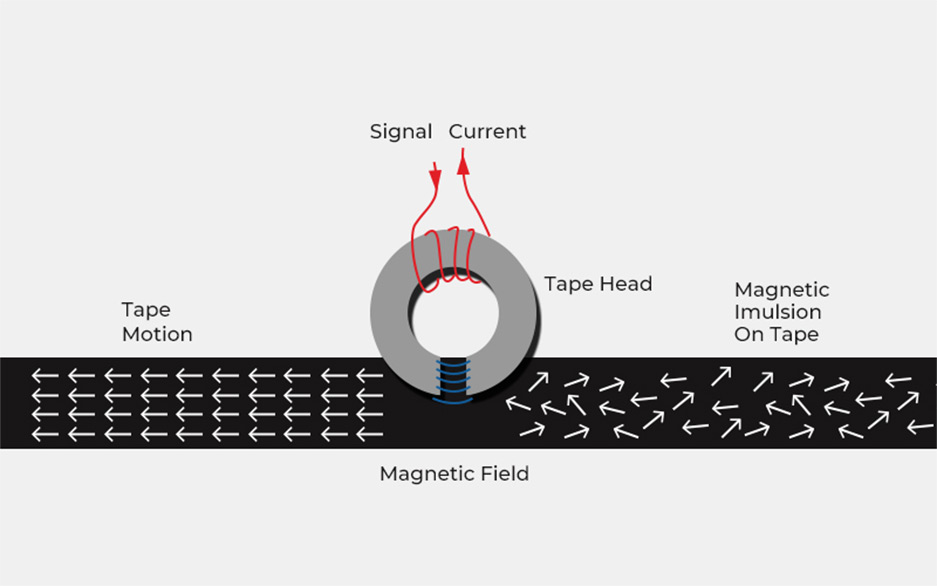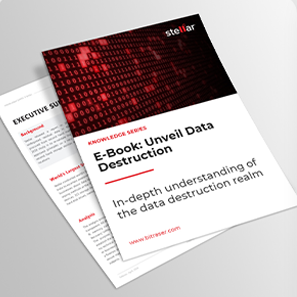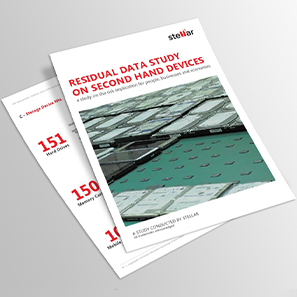In plain
words, data destruction is the process of destroying information, including
physical records like paper documents and the data stored on magnetic tapes, hard
drives, optical disks, memory chips, etc. Its purpose is to obliterate information (or "data" in
the modern sense) such that it becomes irretrievable forever and to every means
humanly possible. The above definition is a cursory glance at data destruction,
outlining its core "functional” facet. A genuine appreciation of the subject
requires a multi-facet inquiry into the historical origins of data destruction,
its evolution with data storage technology, and where it stands today.

The Chapter of our Data Destruction
knowledge series attempts
to unravel the data destruction domain for one and all who deal with data,
including those responsible for data lifecycle management.
Data Destruction- Historical Origins
Data destruction is a fascinating subject that might
seem like a freshly carved inquiry in today’s data-first realm, but it is
indeed an ancient domain- about 6000 years old!
With the
invention of the papyrus in 4000 BCE, the Egyptian civilization had found a way
to chronicle and preserve their life stories, history, culture, and wisdom. Archiving
this colossal knowledge (or data) eventually germinated the need to destroy the papyrus records— a
necessary undertaking to safeguard secret knowledge from theft, avoid sacrilege
due to leakage of indecorous information, or similar reasons. In the absence of
a mechanized method to destroy the papyrus records, the Egyptians relied on
fire and makeshift methods for data destruction.
The practice
of data destruction thus evolved over several thousand years, relying on fire
and other crude methods for destroying the physical records of information until
the invention of the paper shredder in
1909. However, a functional paper
shredder didn’t see the light of day until 1935, when it was designed as a decoy
of the pasta-making machine to destroy anti-Nazi propaganda! By 1959, the hand-cranked
paper shredder had evolved into a motorized shredding machine to destroy paper
documentation in government and financial institutions.
 Image Credit : ironshieldsecurity.com
Image Credit : ironshieldsecurity.com
The next leap in the data destruction
technology came following
the advent of magnetic storage media like magnetic tape drives in 1951, hard
disk drives in 1956, and floppy disks in 1967 that allowed storing data in a “machine-readable”
format1[1].
The original paper shredder wasn’t designed to destroy magnetic tapes and hard
disk drives, and therefore, these new storage devices needed novel data
destruction approaches. The situation was similar concerning the destruction of
data stored on the other emergent media such as solid-state drives (SSD), optical
drives (CD/DVD/Blu-ray), and USB flash storage.
This was a tipping point leading to the innovation
of distinct data destruction approaches that could either destroy only the target
data with no visible impact on the storage medium, “demagnetize” the magnetic
media or “shred” (disintegrate) the storage hardware like paper!
1 Punch cards were the first mechanical storage medium that were machine-readable. But, they did not require data destruction as were fragile and could be damaged by simple folding
Discovering “Data Storage” Mechanisms
So far,
we have established that data destruction- as a need and practice- isn’t new to
humanity but has been present since the birth of data and information
recordkeeping several millennia ago. However, it has evolved into more refined
and targeted forms keeping pace with innovations in data recording and storage technology.
This section revisits data destruction from the facet of data storage
technology. While data destruction means destroying information forever beyond any
retrieval or recovery possibilities, its real-world implementation - approach,
method, and technique - depends upon the storage media type and the way &
form it records the data.
There are essentially two methods or
mechanisms of data storage, namely analog storage and digital storage, as
follows:
1. Analog Data Storage
Analog
data storage involves recording the data as a “physical representation” of the
real-world information like image, sound, motion, text, etc., in the form of a continuous analog signal. For example, a
cassette tape records human voice on a magnetic coating, capturing its defining
traits like loudness, tone, frequency, etc., in a continuous & time-varying
form.
 Image Credit : ironshieldsecurity.com
Image Credit : ironshieldsecurity.com
Some
of the common analog data recording media include vinyl records, cassette
tapes, photographic films, etc.
 Image Credit : ironshieldsecurity.com
Image Credit : ironshieldsecurity.com
2. Digital
Data Storage
Digital
data entails recording and storing data in a binary form, i.e., in the form of
0s and 1s, which are representations of strings of binary digits. Unlike analog
data storage, which records the information as a continuous signal, digital
data is recorded as a discrete, time-separated signal. For example, the data
copied on a hard drive is stored in digital form, transcoding the real-world
information such as a video or document into a contiguous string of 0s and 1s.

A vast
number of storage media can record and store data in digital format. These
“digital data storage” media include magnetic tapes, floppies, magnetic disks,
hard disk drives, solid-state drives, optical media, USB flash drives, embedded
flash memory, etc.
Digital Data Storage Media

Data Destruction Approach For Analog Data
Analog
data inherently resists alterations or changes to its original form without
affecting the properties of the physical storage media. For example, a magnetic
tape records data on a layered coating of magnetized material such as iron
oxide or barium oxide using a tape head
which also reads this information.

Cassette tape head recording data on the magnetic tape
Now,
destroying this data requires altering the magnetic properties of the tape
using a unique ‘Demagnetization’ approach.
This data destruction approach is based
on neutralizing the several sub-micron
local magnetic regions that store the
information on the tape.The process ultimately results in partial or
complete degradation of the magnetic properties of tape media rendering it less
effective or even useless.
‘Physical destruction’ is another approach for destroying the
analog data. The paper shredder described earlier implements the physical
destruction approach.
Data Destruction Approach For Digital
Data
Digitally
recorded data (aka digital data) — stored on reusable storage media like hard
drives, USB flash storage and memory cards — allows inherent control over inducing
alterations and manipulations like full or partial deletion, copying &
replacing the existing information, etc., without affecting the storage media’s
physical properties. For example, using preset commands, actuated via a
computer interface, one can readily manipulate and modify the data stored on a
freely accessible hard disk drive, SSD, phone, or USB stick.
This
inherent nature of digital data stored on reusable media paves the way for data overwriting, replacement, and removal-based
approaches for data destruction. These approaches are based on executing
specific commands via the host computer interface to overwrite and replace the addressable memory locations on a hard
drive (or other reusable media) with binary patterns. This overwriting process if
executed properly can destroy the existing data and turn it irretrievable.
Digital
data stored particularly on magnetic storage media such as hard disk drives,
tapes, and floppies can also be destroyed using the demagnetization approach. Additionally, the physical destruction approach applies to all types of data storage
devices, irrespective of the underlying media (magnetic, flash memory, optical,
etc.) or whether it is reusable or single-use.
Why is Data Destruction Gaining Prominence?
The rapid growth of data and the rising threats in tandem aggravate this
situation, making “personal data protection” a top-tier challenge and priority
for organizations. As per IDC
Data Age 2025 report, the global datasphere (i.e., total data
created, captured, and replicated) will grow from 33 Zettabytes* in 2018 to 175 ZB by 2025 at a CAGR of 61%.
Managing this colossal data from the users’ privacy standpoint and in line with
the law of the land can be a task of unimaginable complexity. Maintaining data
privacy is a growing challenge for information security managers, especially
when the data turns redundant, missed out from accounting, is abandoned, or
moves out of cybersecurity purview. In such scenarios, contemporary data protection laws obligate the custodian organization to ‘permanently’ and ‘provably’ destroy unwanted information.
The
emergence of stringent data protection laws such as GDPR, CCPA, etc., obligates
the organizations possessing ‘personal data’ to deploy adequate measures for
safeguarding the users’ data privacy. Failing
to comply with these laws and regulations – at any point throughout the data
lifecycle – can lead to hefty penalties, customer loss, and even lawsuits. For
example, non-compliance with EU-GDPR can result in fines of up to
€20 million or 4% of the annual global turnover of the previous financial
year, whichever is greater.
The
practice of Data Destruction addresses this business-critical need through
the systematic elimination of redundant information from the data storage
media. Data destruction serves the crucial need to protect data from falling
into the wrong hands and avoid the many repercussions.
Want
to learn more about the growing need for data destruction?














